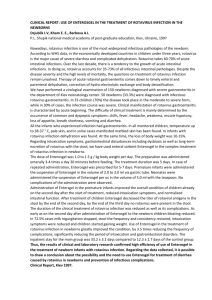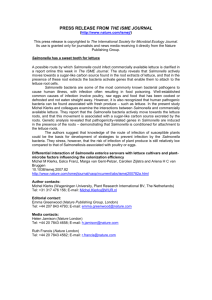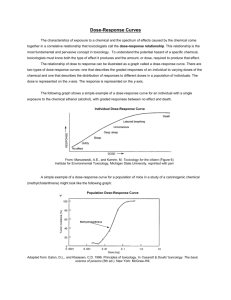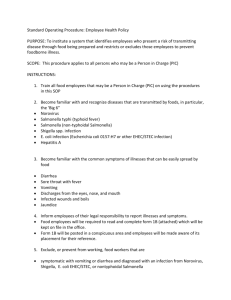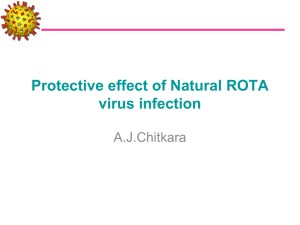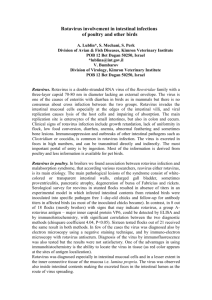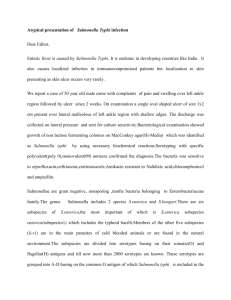Chapter 29 Risk Assessment Charles P. Gerba What are some
advertisement
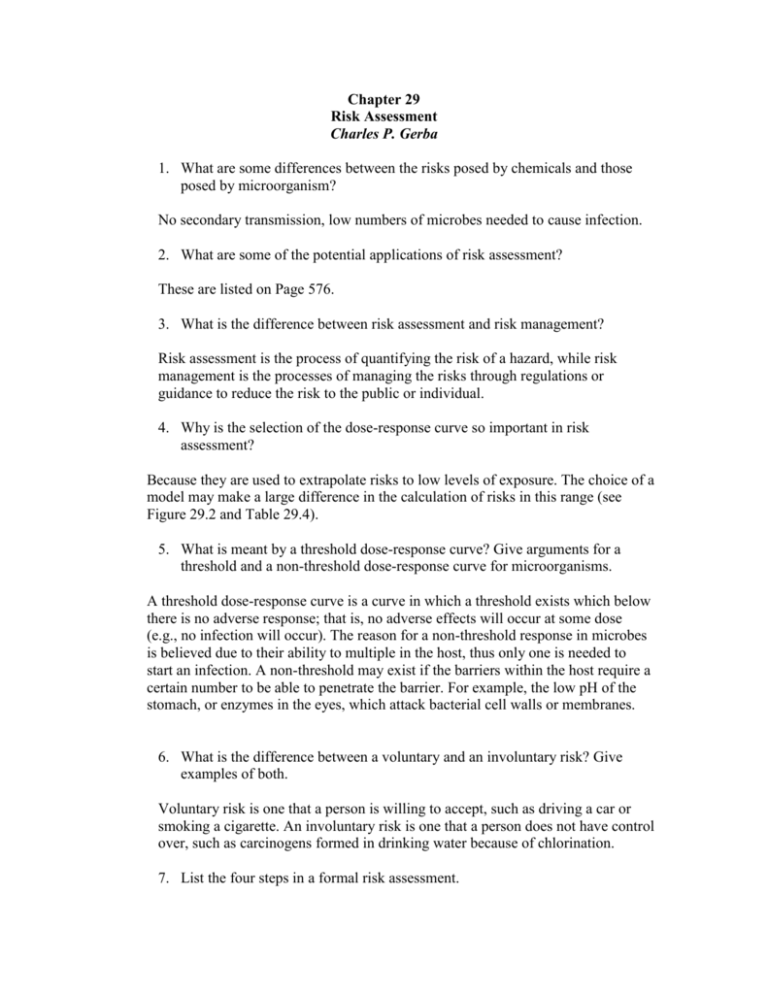
Chapter 29 Risk Assessment Charles P. Gerba 1. What are some differences between the risks posed by chemicals and those posed by microorganism? No secondary transmission, low numbers of microbes needed to cause infection. 2. What are some of the potential applications of risk assessment? These are listed on Page 576. 3. What is the difference between risk assessment and risk management? Risk assessment is the process of quantifying the risk of a hazard, while risk management is the processes of managing the risks through regulations or guidance to reduce the risk to the public or individual. 4. Why is the selection of the dose-response curve so important in risk assessment? Because they are used to extrapolate risks to low levels of exposure. The choice of a model may make a large difference in the calculation of risks in this range (see Figure 29.2 and Table 29.4). 5. What is meant by a threshold dose-response curve? Give arguments for a threshold and a non-threshold dose-response curve for microorganisms. A threshold dose-response curve is a curve in which a threshold exists which below there is no adverse response; that is, no adverse effects will occur at some dose (e.g., no infection will occur). The reason for a non-threshold response in microbes is believed due to their ability to multiple in the host, thus only one is needed to start an infection. A non-threshold may exist if the barriers within the host require a certain number to be able to penetrate the barrier. For example, the low pH of the stomach, or enzymes in the eyes, which attack bacterial cell walls or membranes. 6. What is the difference between a voluntary and an involuntary risk? Give examples of both. Voluntary risk is one that a person is willing to accept, such as driving a car or smoking a cigarette. An involuntary risk is one that a person does not have control over, such as carcinogens formed in drinking water because of chlorination. 7. List the four steps in a formal risk assessment. Hazard identification, exposure assessment, dose-response assessment, and risk characterization. 8. Does infection always lead to illness with enteric pathogens? What are the major factors that determine morbidity and mortality outcomes with microbial infections? Not all infections lead to illness, i.e. the organism grows in the host but does not cause illness. Age (more serious outcome likely in the elderly and young) and the immunocompromised. 9. What types of dose-response curve best reflect pathogen exposure? The exponential model or the beta-Poisson model. 10. What are some potential applications of microbial risk assessment? Setting standards for the treatment of drinking water or recreational water. Also, those listed on page 576. 11. Calculate the risk of infection from rotavirus during swimming in polluted water. Assume that 50 ml of water is ingested during swimming and the concentration of virus was one per 10 liters. What would the risk be in a year if a person went swimming 10 times in the same water with the same concentration of rotavirus? Assumptions – 50 mL of water ingested during swimming - one rotavirus per 10 liters or 0.005 rotavirus in 50 mL - Thus N = 0.005 (rotavirus ingested) - For Salmonella the probability of infection = P = 1 – (1 + N/β)-α (from Table 29.9) (Eq. 29.1) - From Table 29.9 for rotavirus α = 0.26, β = 0.42 - Thus P = 1 – (1 + 0.005/0.42)-0.26 - P = 1 – (1.0119)-0.26 = 1 – 0.99692 = 0.00308 = 3.08 X 10-3 12. Using the exposure of Example Calculation 29.1 determine the risk of infection and disease from Salmonella from a yearly exposure to lettuce. Assumptions – 8 CFU of Salmonella/100g - 60 g consumed 4.8 Salmonella ingested - Lettuce consumed 10 times in a year - Risk of infection for Salmonella = P = 1 –exp(-rN) (from Table 29.9) (Eq. 29.2) - R = 0.00752 (from Table 29.9) - Thus – P = 1-exp [ - (0.00752)(4.8)] P = 1 – exp( - 0.036096) = 1 – 0.964 = 0.036 = 3.6 X 10-2 Risk in one year = P = 1 - (1-P)10 (Eq. 29.3 )= 1- (1 – 0.036)10 = 1(0.964)10 =1 – 0.693 = 0.307 = 3.07 X 10-1

